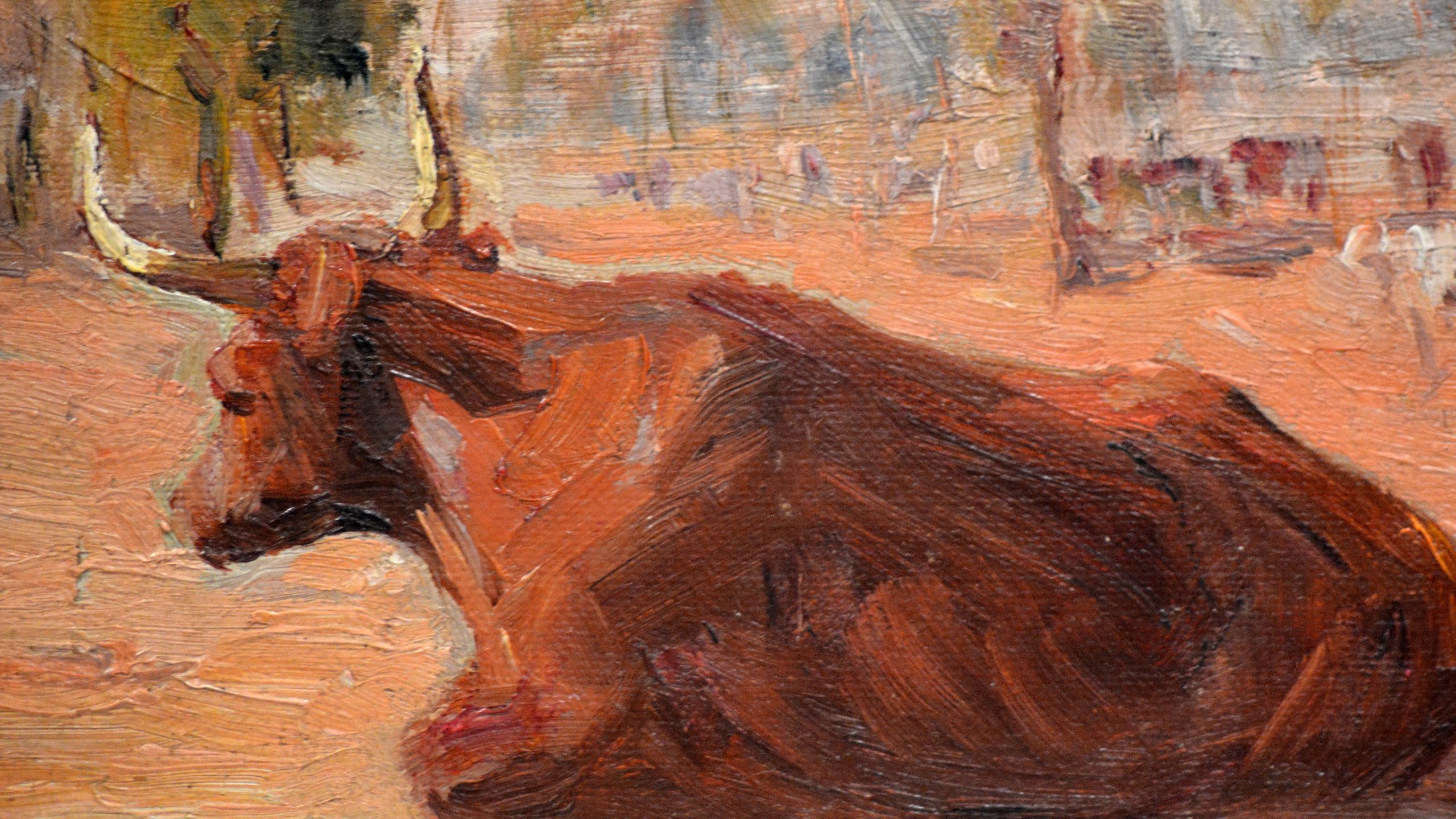Bullocks Resting
Pastoral Art and the Australian Colonial Identity
Splotches of rich auburn resting on red earth, smears wandering in small patches of shade, and above all, heat. The only thing missing is the drone of flies above the steer’s head.
Bullocks Resting by John Salvana (1873-1956) captures a pastoral image that has long captivated settlers in Australia. Pastoralist art presents country life, particularly landscapes and cattle, through a romanticised and idealistic lens. This style of art has played a huge role in the cultural make up of Australia.
From early settlement in the 1800s through to the beginnings of Modernist Australian art in the 1950s, artists spent much time painting uninhabited expanses. Alien lands were only interrupted by the tamed, familiar image of the pasture – the beginnings of a new culture on an empty continent.
Terra nullius, meaning ‘land belonging to no one,’ was a legal principle implemented by NSW Governor Richard Bourke in 1835 – 47 years after the arrival of the First Fleet. This principle meant the land was legally considered completely devoid of ‘civilised’ people capable of land ownership prior to the arrival of settlers. It is no mistake then that presenting settlement as civilised became a necessary measure to achieve land ownership.
Taken individually, the artwork captures what feels to be Salvana’s reverence or curiosity for the place he called home. Indeed, much of his art captures this feeling. After all, he was born in a small gold mining town in the state’s Central West, Ironbark (now called Stuart Town), on Wiradjuri country, so this likely was his authentic vision of home.
In saying that, the only way pastoralism could be presented as beautiful was to completely separate it ‘from the forced occupation of the land.’
To this day, when one thinks of what might be quintessentially Australian, images of dust-covered men readily come to mind: bushmen, squatters, and sheep shearers. Salvana’s own hometown is no exception, having been immortalised in a Banjo Paterson poem about a bearded bushman, ‘The Man From Ironbark’ (1892).
Undoubtedly, art has played an important part of normalising this country’s colonial identity. The absence of First Nations people in the work of painters like Salvana is no mistake, it was the mission of settlement itself.





